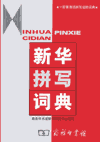
Here’s the first of several selected readings from Yin Binyong’s Xīnhuá Pīnxiě Cídiǎn (《新华拼写词典》 / 《新華拼寫詞典》). It covers the writing of verbs.
This reading is available in two versions:
For those who would like to read about this in English, see


Here’s the first of several selected readings from Yin Binyong’s Xīnhuá Pīnxiě Cídiǎn (《新华拼写词典》 / 《新華拼寫詞典》). It covers the writing of verbs.
This reading is available in two versions:
For those who would like to read about this in English, see
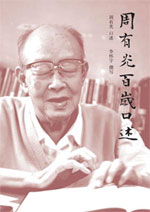 I didn’t have any luck finding anything in Sin Wenz (Lādīnghuà Xīn Wénzì / 拉丁化新文字), despite trips to several large used book stores. (Fortunately, the Internet is now providing some leads. Thanks, Brendan and Joel!) But I did find some other books to bring home.
I didn’t have any luck finding anything in Sin Wenz (Lādīnghuà Xīn Wénzì / 拉丁化新文字), despite trips to several large used book stores. (Fortunately, the Internet is now providing some leads. Thanks, Brendan and Joel!) But I did find some other books to bring home.
I acquired lots of books by Zhou Youguang, not all of which focus primarily on linguistics:
Other than the Zhou Youguang books, here are my favorite finds of the trip, as they are for the most part in correctly word-parsed Hanyu Pinyin (with Hanzi underneath), along with a few notes in English:
I’ll soon be posting more about the above books with Pinyin, so watch this site for updates. Really, this is gonna be good.
Although this collection of Y.R. Chao says it’s volume 15, it’s actually two books:
Some more titles:
The following I bought because Yin Binyong, the scholar primarily responsible for Hanyu Pinyin’s orthography, is the author of these titles from Sinolingua’s series of Bógǔtōngjīn xué Hànyǔ cóngshū (“Gems of the Chinese Language through the Ages” (their translation)), all of which are in Mandarin (Hanzi) and English, with Pinyin only for the sayings being illustrated:
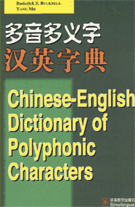
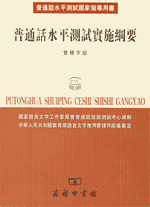
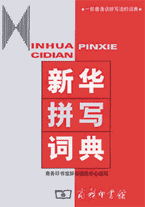
Other:
And finally:
Of course I already have that one — more than one copy, in fact. But it’s always good to have more than one spare when it comes to one of the two most important books on Pinyin orthography. I really need to follow up on my requests to use excerpts from this book, as it is the only major title missing from my list of romanization-related books (though it’s in Mandarin only).
![beijing_bookstore sign in a Beijing bookstore reading 'Education Theury' [sic]](https://pinyin.info/news/news_photos/2009/07/beijing_bookstore.jpg)
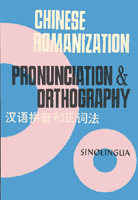 For several years I’ve had online the brief official principles for writing Hanyu Pinyin. But those go only so far. Fortunately, Yin Binyong (Yǐn Bīnyōng / 尹斌庸) (1930-2003), who was involved in work on Hanyu Pinyin from the beginning, wrote two books on the subject, producing a detailed, logical, and effective orthography for Pinyin.
For several years I’ve had online the brief official principles for writing Hanyu Pinyin. But those go only so far. Fortunately, Yin Binyong (Yǐn Bīnyōng / 尹斌庸) (1930-2003), who was involved in work on Hanyu Pinyin from the beginning, wrote two books on the subject, producing a detailed, logical, and effective orthography for Pinyin.
The only one of those two books with English explanations as well as Mandarin, Chinese Romanization: Pronunciation and Orthography (Mandarin title: Hànyǔ Pīnyīn hé Zhèngcífǎ / 汉语拼音和正词法 / 漢語拼音和正詞法), has gone out of print; and at present there are no plans to bring it back into print. Fortunately, however, I was eventually able to secure the rights to reproduce this work on Pinyin.Info. Yes, the entire book. So everybody be sure to say thank you to the generous publisher by buying Sinolingua’s books.
This book, which is nearly 600 pages long, is a mother lode of information. It would be difficult for me to overstate its importance. Over the next few months I’ll be releasing the work in sections. I had intended to delay this a little, as I have had to wait for a fancy new scanner and am still awaiting some OCR software that can handle Hanzi as well as the Roman alphabet. (This Web site is an expensive hobby!) But since Taiwan has recently adopted Hanyu Pinyin I will be releasing some material soon (without OCR, for the time being) in the hope of helping Taiwan avoid making mistakes in its implementation of an orthography for Pinyin here.
Watch this blog for updates.
Sino-Platonic Papers has rereleased for free its sixth volume of reviews, mainly of books about China and its history and languages (5.6 MB PDF).
The reviews are by David Utz, Xinru Liu, Taylor Carman, Bryan Van Nordan, and Victor H. Mair.
Contents
- Review Article by David A. Utz of Ádám Molnár, Weather-Magic in Inner Asia. With an Appendix, “Alttürkische fragmente über den Regenstein,” by P. Zieme. Indiana University Uralic and Altaic Series, 158. Bloomington, Indiana: Indiana University, 1994.
- Graham Parkes, ed., Heidegger and Asian Thought. Honolulu: University of Hawaii Press, 1987. Reviewed by Taylor Carman and Bryan Van Norden.
- Beijing Daxue Nanya Yanjiusuo [Peking University Institute for South Asian Studies], ed. Zhongguo zaiji zhong Nanya shiliao huibian (Collection of South Asian Historical Materials from Chinese Sources). 2 vols. Shanghai: Shanghai Guji Chubanshe, 1995. Reviewed by Xinru Liu.
The following 23 reviews are by the editor of Sino-Platonic Papers.
- Ronald E. Emmerick and Edwin G. Pulleyblank. A Chinese Text in Central Asian Brahmi Script: New Evidence for the Pronunciation of Late Middle Chinese and Khotanese. Serie Orientale Roma, LXIX. Rome: lstituto ltaliano per ii Medio ed Estremo Oriente, 1993.
- YIN Binyong and SU Peicheng, eds. Kexuede pingjia Hanyu hanzi [Scientifically Appraise Sinitic and Sinographs]. Zhongguo yuwen xiandaihua congshu (Chinese Language Modernization Series), 1. Peking: Huayu Jiaoxue Chubanshe (Sinolingua), 1994.
- WU Chang’an. Wenzi de toushi — Hanzi lunheng [A Perspective on Culture — Balanced Discussions on the Sinographs]. Wenhua Yuyanxue Congshu [Cultural Linguistics Series]. N.p. (Changchun?): Jilin Jiaoyu Chubanshe, 1995.
- ZHOU Shilie, comp. Tongxingci cidian [Dictionary of Homographs]. Peking: Zhongguo Guoji Guangbo Chubanshe, 1995. (Reviewed twice from different perspectives in the same issue.)
- KANG Yin. Wenzi Yuanliu Qianshi (The Origin and Development of Chinese Ideographs) (sic). N.p.: Guoji Wenhua Chubanshe, 1992.
- DUAN Kailian. Zhongguo minjian fangyan cidian [A Dictionary of Chinese Folk Topolecticisms]. Haikou: Nanhai chuban gongsi, 1994.
- CHANG Xizhen, comp. Beiping tuhua [Peking Colloquialisms]. Taipei: Shenge Shiye Youxian Gongsi Chubanshe, 1990.
- ZHANG Xunru. Beiping yinxi xiaoche bian [A Compilation of Words with “er” Suffix in Pekingese]. Taipei: Taiwan Kaiming, 1991; 2nd Taiwan ed.; 1956, first Taiwan ed.
- LI Sijing. Hanyu “er” [] yin shi yanjiu [Studies on the History of the “er” [] Sound in Sinitic]. Taipei: Taiwan Shangwu, 1994.
- Erdengtai, Wuyundalai, and Asalatu. Menggu mishi cihui xuanshi [Selected Explanations of Lexical Items in The Secret History of the Mongols]. Mengguzu lishi congshu [Series on the History of the Mongolian People]. Hohhot: Neimenggu Renrnin Chubanshe, 1980; 1991 rpt.
- Matthews, Stephen and Virginia Yip. Cantonese: A Comprehensive Grammar. Routledge Grammars. London and New York: Routledge, 1994.
- Killingley, Siew-Yue. Cantonese. Languages of the World / Materials 06. München-Newcastle: Lincom Europa, 1993.
- ZHONG Jingwen, chief ed. Yuhai (An Encyclopedia of Chinese Folk Language), Vol. 1: Mimiyu (Chinese Secret Language). Vol. editors ZHENG Shuoren and CHEN Qi. Shanghai: Shanghai Wenyi Chubanshe, 1994.
- Harrell, Stevan, ed. Cultural Encounters on China’s Ethnic Frontiers. Seattle and London: University of Washington Press, 1995.
- Woo, Henry K. H. The Making of a New Chinese Mind: Intellectuality and the Future of China. Hong Kong: China Foundation, 1993.
- Miller, Lucien, ed. South of the Clouds: Tales from Yunnan. Translated by GUO Xu, Lucien Miller, and XU Kun. Seattle and London: University of Washington Press, 1994.
- Hoizey, Dominique and Marie-Joseph Hoizey. A History of Chinese Medicine. Tr. by Paul Bailey. Vancouver: UBC Press; Edinburgh: Edinburgh University Press, 1993.
- Crystal, David. An Encyclopedic Dictionary of Language and Languages. London: Penguin, 1992, 1994.
- Day, Gordon M. Western Abenaki Dictionary. Vol. 1: Abenaki-English. Vol. 2: English-Abenaki. Mercury Series, Canadian Ethnology Service, Papers 128 and 129. Hull, Quebec: Canadian Museum of Civilization, 1994-95.
- Hassrick, Peter H. The Frederic Remington Studio. Cody, Wyoming: Buffalo Bill Historical Center, in association with University of Washington Press (Seattle, London), 1994.
- Jonaitis, Aldona, ed. Chiefly Feasts: The Enduring Kwakiutl Potlatch. Seattle and London: University of Washington Press; New York: American Museum of Natural History, 1991.
- Jerry L. Norman and W. South Coblin. “A New Approach to Chinese Historical Linguistics.” Journal of the American Oriental Society, 115.4 (1995),576-584.
Bits and Pieces
- Letter concerning An Zhimin’s views on the origins of bronze metallurgy in China.
- “Yet again on Tibet.” This is one in a continuing series of discussions with Edwin G. Pulleyblank, W. South Coblin, and others on the origins of the name “Tibet”.
This was first published in February 1996 as issue no. 70 of Sino-Platonic Papers.
The most recent rerelease from Sino-Platonic Papers is Dì-yī ge Lādīng zìmǔ de Hànyǔ Pīnyīn Fāng’àn shì zěnyàng chǎnshēng de? (How Was the First Romanized Spelling System for Sinitic Produced? / 第一个拉丁字母的汉语拼音方案是怎样产生的), by YIN Binyong (尹斌庸).
The author should be familiar to regular readers of this site, as he wrote the standard works on Hanyu Pinyin orthography — Chinese Romanization: Pronunciation and Orthography and the Xinhua Pinxie Cidian — as well as Pinyin-to-Chinese Character Computer Conversion Systems and the Realization of Digraphia in China.
The text is in Mandarin in Chinese characters. Here is the introduction.
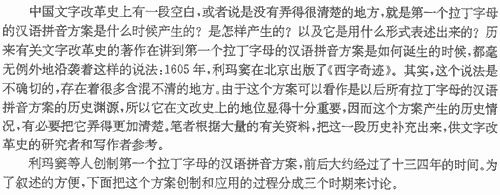
This is issue no. 50 of Sino-Platonic Papers. It was first published in November 1994.